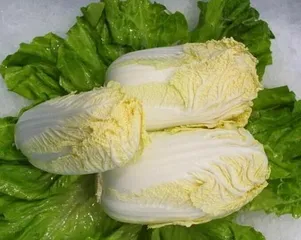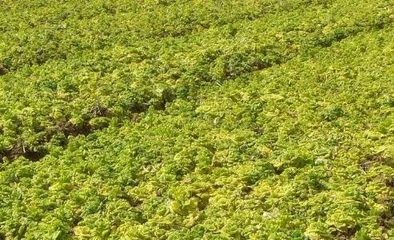Yellow heart cabbage is a nutritious and easy-to-grow vegetable, suitable for home gardens. However, to harvest high-quality yellow heart cabbage, it is necessary to master the correct planting time and methods. This article will detail the best planting time and methods for yellow heart cabbage, as well as cultivation techniques.

Introduction to Yellow Heart Cabbage Varieties
Yellow heart cabbage is a root and stem vegetable, and both the root and leaves are edible. Different varieties have different shapes, textures, and nutritional components. When choosing a yellow heart cabbage variety, you can select based on your personal taste and growing environment.
Suitable Sowing Time
Yellow heart cabbage prefers sunlight and a warm climate, making it suitable for sowing from April to May. During this period, the temperature is moderate and there is sufficient rainfall, which is conducive to the growth and development of yellow heart cabbage.

Sowing Methods for Yellow Heart Cabbage
1. Soil Preparation: Yellow heart cabbage prefers loose, fertile, and well-drained soil. Before sowing, the soil can be loosened, fertilized, and a suitable amount of well-rotted organic matter can be added.
2. Sowing Method: You can choose to sow directly or to first grow seedlings and then transplant them. When sowing directly, scatter the seeds evenly on the soil surface and gently pat them down. For seedling cultivation, place the seeds in a seed tray, keep the soil in the tray moist, and transplant the seedlings to pots or vegetable plots when they grow to 3-5 cm.
Light and Temperature Requirements for Yellow Heart Cabbage
Yellow heart cabbage requires sufficient sunlight, needing 5-6 hours of light per day. At the same time, yellow heart cabbage has relatively high temperature requirements and is suitable for growing in an environment of 15-25°C.

Watering and Fertilizing for Yellow Heart Cabbage
During the growing period, yellow heart cabbage needs regular watering to keep the soil moist. For fertilization, you can choose organic or chemical fertilizers, but it is important to pay attention to the amount and frequency of application to avoid over-fertilization.
Pest and Disease Control for Yellow Heart Cabbage
Yellow heart cabbage is susceptible to pests and diseases such as powdery mildew, black spot, and aphids. You can use chemical agents or biological pesticides for control, or adopt physical control methods, such as covering the leaves with gauze.
Harvesting Time for Yellow Heart Cabbage
Yellow heart cabbage can be harvested 60-90 days after sowing. You can choose the appropriate harvesting time according to your needs. Generally, when harvesting, the root and leaves should be picked together.
Storage Methods for Yellow Heart Cabbage
After harvesting, yellow heart cabbage needs to be cleaned promptly, dried, and then stored in a fresh-keeping bag. It can also be processed into dried vegetables or pickles for long-term storage and consumption.
Nutritional Value of Yellow Heart Cabbage
Yellow heart cabbage is rich in nutrients such as protein, vitamins, and minerals, which help to enhance immunity, promote digestion, and improve nutrient absorption.
Pairing Yellow Heart Cabbage with Other Vegetables
Yellow heart cabbage can be paired with other vegetables for consumption, such as stir-fried greens and cold-dressed cucumbers. At the same time, yellow heart cabbage can also be added to soups for cooking, which is nutritious and delicious.
Cooking Methods for Yellow Heart Cabbage
Yellow heart cabbage can be eaten raw or processed into various delicacies, such as cold salads, stir-fries, and soups. At the same time, yellow heart cabbage can also be used to make foods like bread and biscuits.
Suitable Groups for Yellow Heart Cabbage
Yellow heart cabbage is suitable for people of all ages, especially those with anemia or constipation. However, it should be noted that excessive consumption may lead to indigestion.
Medicinal Value of Yellow Heart Cabbage
Yellow heart cabbage has certain medicinal value and can be used to treat diseases such as anemia, constipation, and high blood pressure.
Commercial Value of Yellow Heart Cabbage
Yellow heart cabbage has a certain commercial value in the market and can be used as a signature dish by food operators such as restaurants and supermarkets, or as a source of income from home cultivation.
Mastering the correct planting and cultivation techniques for yellow heart cabbage not only allows you to enjoy fresh vegetables grown by yourself but also provides nutritional and economic value. It is hoped that this article can provide some useful information and reference for everyone.